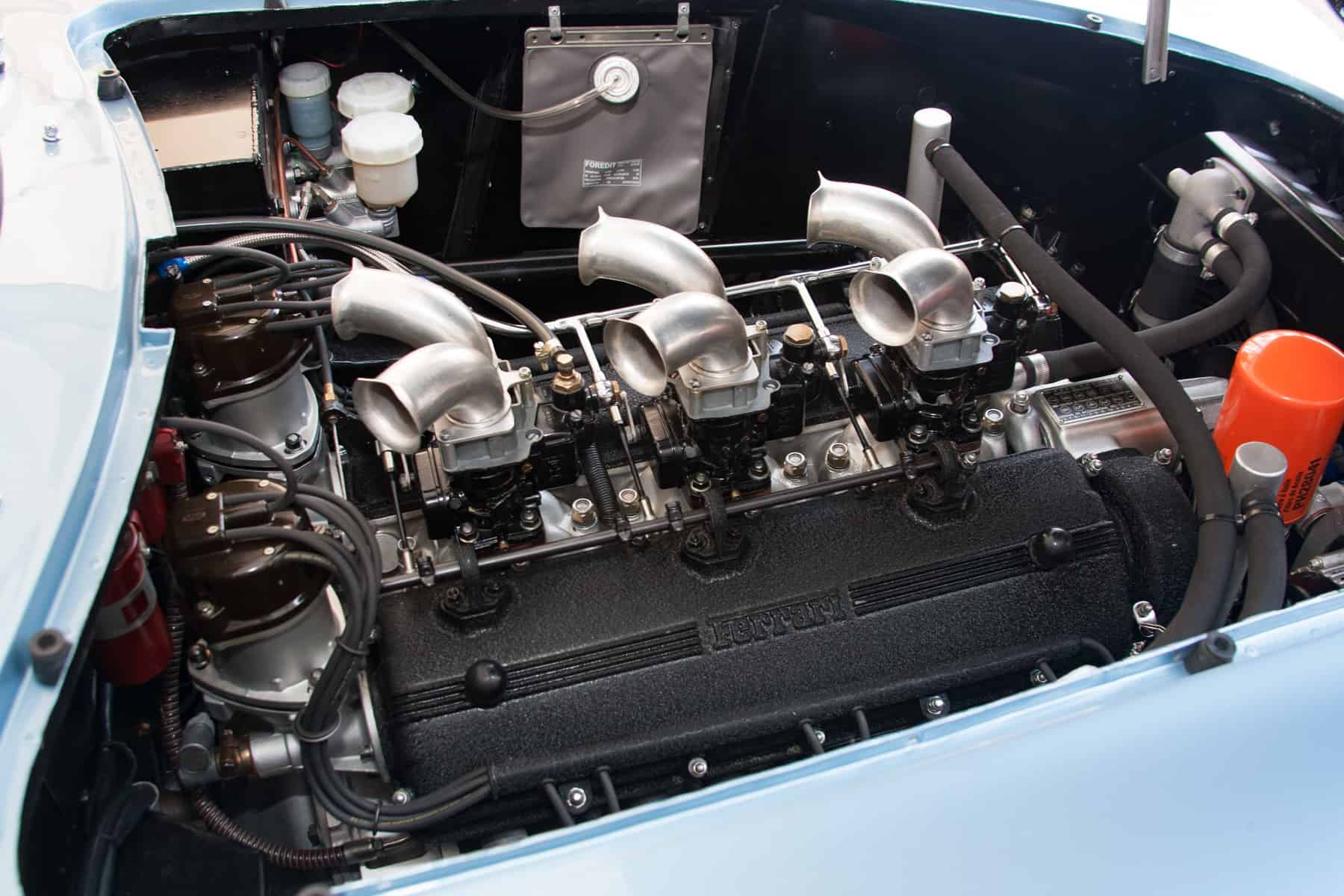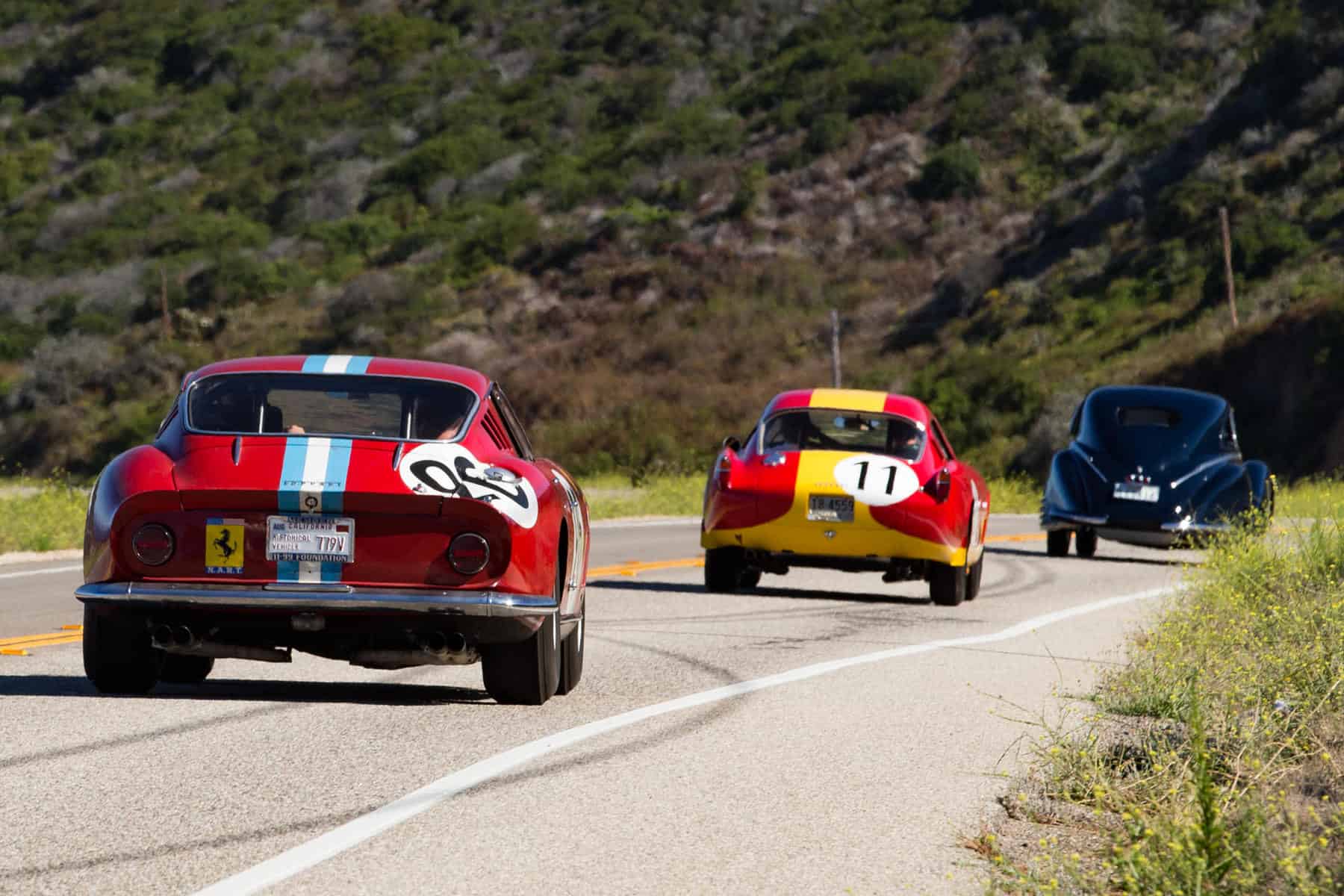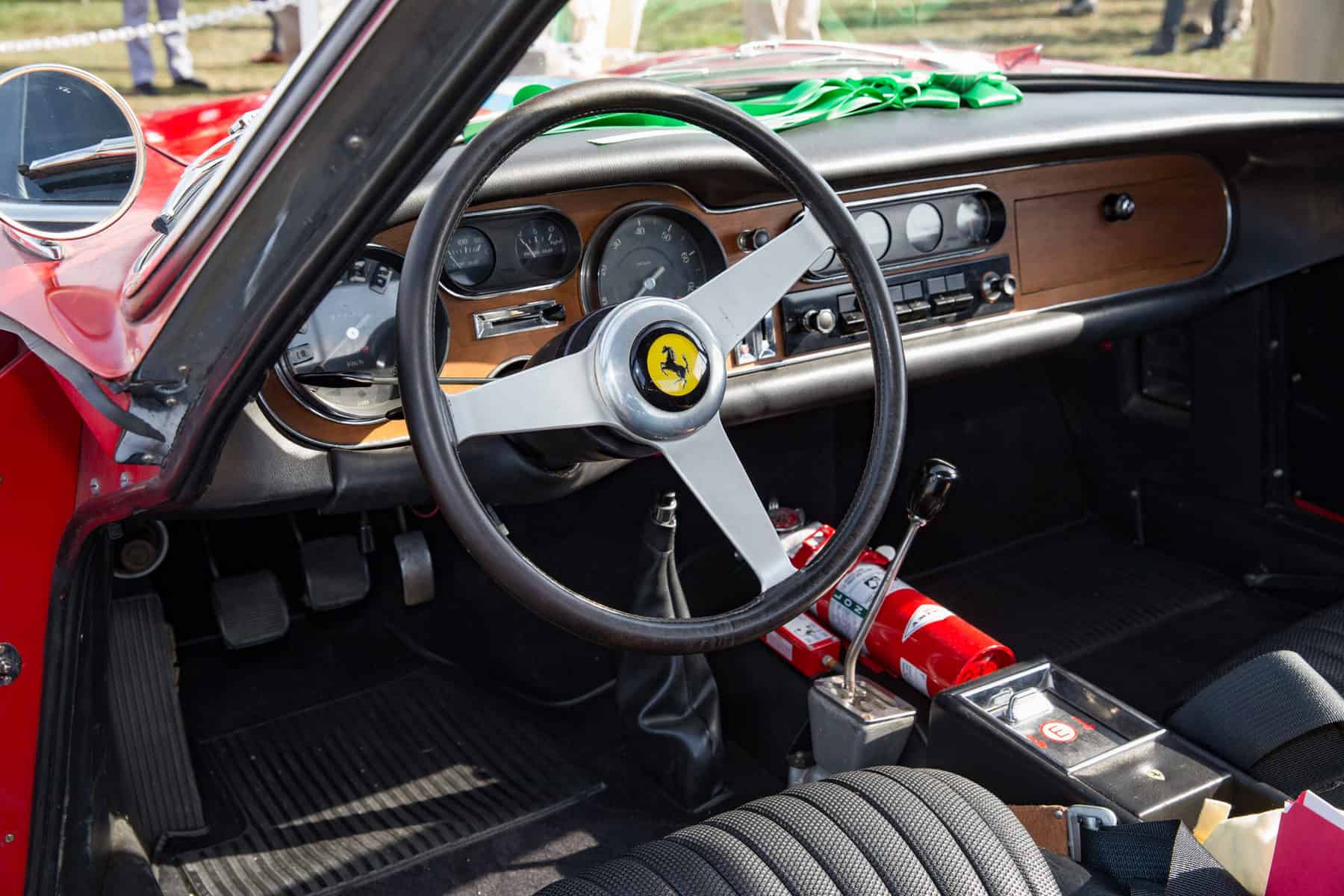Ferrari 275 GTB/C
Make no mistake, a classic with a capital "C"
WORDS & IMAGES BY: WOUTER MELISSEN
One would be forgiven for mistaking a Ferrari 275 GTB/C for a “regular” 275 GTB road car. Just do not make the mistake of leaning on any of the panels!
Short for Competizione, the added “C” indicates a crucial difference. That the two are so difficult to distinguish was certainly no accident. It came after several years of disputes over homologation of GT racers between Enzo Ferrari and the sport’s governing bodies. Ferrari eventually built twelve examples of the 275 GTB/C during the 1966 season, all of which were earmarked for customers. These were the last of a long line of highly successful GT racers built in-house by the Ferrari competition department.
The GT or Grand Touring category had come to the fore during the 1950s as a separate class for racers based on production road cars. The various evolutions of the iconic Ferrari 250 GT dominated the category from the mid-1950s. Outright victories were scored in events like the Tour de France, while Ferraris were also regular class winners at all major events including the Mille Miglia and 24 Hours of Le Mans. From a business perspective, GT racing was even more important for Ferrari. Not only did the Italian company sell a large number of competition cars to customers, Ferrari also offered several road-going versions of the 250 GT.
During the early 1960s, the competition heated up with Aston Martin and Jaguar entering the GT racing fray. From 1962, the World Championship of Makes was run for GT cars. Anticipating even stronger opposition, Ferrari created the ultimate development of the 250 GT. While still based on the 250 GT range and equipped with a development of the familiar 3.0-liter V12, it featured a large number of subtle improvements. Known internally as the “Comp ’62,” it was also fitted with an all-new body. All these changes were made with great care to ensure the new car still met the homologation requirements. To remind everyone that the new Ferrari did just that, it was dubbed the 250 GTO for Omologato or homologated.
The Ferrari 250 GTO was hugely successful and ensured Ferrari won the World Championship in 1962 and 1963. A new threat did arrive in the form of the Shelby Cobra. With its brick-like aerodynamics, the larger-engined Cobra was only a match for the Ferraris at a select number of tracks. To help the Cobras go down the straights a lot faster, an all-new slippery body was developed for the 1964 season. As a response, Ferrari tried to pass off the new 250 LM as a further development of the 250 GT range. This was, at best, a tad optimistic, as the 250 LM had its 3.3-liter V12 mounted amidships. According to Enzo Ferrari, these were mere details, but the powers that be disagreed and refused homologation until at least one hundred examples were built. A hastily re-bodied 250 GTO ’64 saw Ferrari keep its World Championship, but Shelby did score the coveted class win at Le Mans.
In 1964, Ferrari also introduced the all-new 275 GTB road car. It combined a striking new Pininfarina-styled body with an all-independently sprung chassis and a 3.3-liter version of the familiar V12 engine. With the 250 LM unlikely to ever be homologated, Ferrari opted to create a competition version of the 275 GTB instead. Clearly still keen on pushing the envelope, the Italians created what was effectively a 7/8th scale version of the 275 GTB. The “1965 GTO” still resembled the production 275 GTB, but also featured a bespoke chassis and was over 200 kg lighter than the road car. Homologation was once again refused and a very angry Enzo Ferrari announced Ferrari would withdraw from GT racing with immediate effect.
Once the dust had settled, a compromise was made, which allowed Ferrari to race the 275 GTB at a minimum dry weight of 980 kg, even though the road car tipped the scales at 1,100 kg. This allowed one of the cars to be run at Le Mans, where it won the GT class in a race that saw a 250 LM score the outright victory. Not sure the “1965 GTO” would be ever be homologated, the customer demand was met by producing a small run of only very mildly modified 275 GTB competition cars during the 1965 season. Despite the win at Le Mans, Ferraris failed to offer a consistent challenge to the Cobras and Shelby was crowned the 1965 World Champion of Makes.
There was still an interest from customers for a competition car based on the 275 GTB, so for the 1966 season the 275 GTB/C was developed. It was based on the revised “Long Nose” 275 GTB that was introduced in 1966. Entrusted with the work was the talented chief engineer, Mauro Forghieri. His design brief seemed quite straightforward, but, considering the problems Ferrari had run into with the rule makers during the last couple of years, Forghieri had to tread carefully. The weight break agreed on in 1965 was carried over, which did allow him some wiggle room. Forghieri used this to his advantage by remaking many of the 275 GTB in a lighter material. He effectively created a wolf in sheep’s clothing, or considering it was a Ferrari competition car, a tiger in wolf’s clothing.
Dubbed the Tipo 590A, the steel tubular frame was lighter and stiffer compared with the production car’s. Carried over from the 275 GTB was the all-independent, double-wishbone suspension, with strengthened hubs. Like the road car, disc brakes were fitted on all four corners. Although virtually identical in design to the standard bodywork, the 275 GTB/C panels were made from 20-gauge aluminum. That was just about half the thickness used for the road cars. To ensure the rear section of the body would not buckle, it was lined with a fiberglass reinforcement. Bumpers were fitted but they were also so light that they served no actual purpose. To further lighten the car, holes were drilled in many parts, magnesium was used for the seat frames, the floors were made from very thin aluminum sheets, and, except for the windshield, all the glass was replaced by plexiglass facsimile.
Powering the 275 GTB/C was the Tipo 213 V12 engine, which was directly derived from the racing engine fitted in the 250 LM. By using a dry-sump system, it could be mounted lower in the chassis than the standard production engine. Many of the castings were made from a magnesium alloy. Nimonic steel valves were fitted, filled with sodium to help dissipate the heat. Special forged pistons, crankshaft, and cam shafts were also fitted, as was a larger-bore exhaust system. Despite the great care taken in the development of the 275 GTB/C, Ferrari somehow forgot to include in the homologation papers that a six-carburetor setup was available on the 275 GTB road car. This meant that the 275 GTB/C was required to run just three twin-choke Weber carburetors. They were fitted with very distinct rearward facing intake trumpets. The Tipo 213 engine was rated for 282 hp at 7,500 rpm.
Carried over from the production road car was the five-speed gearbox that was mounted in unit with the final drive. This greatly helped distribute what little weight was left evenly over the car. While similar in design, the competition gearbox did boast magnesium alloy castings and close-ratio gears. The engine and gearbox were connected through an open driveshaft. A strengthened ZF limited-slip differential was also fitted. Further changes included an additional oil cooler, a separate catch tank for the dry-sump system that was mounted in one of the front fenders, and the installation of a 140-liter fuel tank for long-distance racing. The 275 GTB/C also featured wider Dunlop tires, which were fitted on Borrani wire wheels.
By the time the 275 GTB/C arrived, the Ferrari factory team and Shelby American were deeply involved in the battle for outright victories with the 330 P3 and GT40 sports prototypes. Racing the GT cars was again left to privateers, and many of Ferrari’s familiar customers acquired 275 GTB/Cs. These included the likes of Maranello Concessionaires, Ecurie Francorchamps, Scuderia Filipinetti, and the North American Racing Team. During the 1966 season, Ferrari built a total of twelve examples, several of which were never actually raced in anger. They are the very last 275 GTBs built, as the production road car was superseded by the 275 GTB/4, which was fitted with a four-cam version of the 3.3-liter V12 engine.
The 275 GTB/Cs that were raced proved to be hugely successful. At the 24 Hours of Le Mans, two more GT class wins were scored in 1966 and 1967. In Italy, several privateers also campaigned the cars with Tullio Sergio Marchesi winning the Italian Championship in 1966 and 1967. In 1966, he also finished first in class in the Targa Florio. The 275 GTB/Cs were only let down by their Borrani wheels. The Dunlop M4 competition tires combined with the all-round independent suspension generated so much grip that the wheels regularly buckled under the load. As a result, no Ferrari competition car was fitted with wire wheels again.
During the final years of the 1960s, the interest in GT racing waned and Ferrari produced no direct replacement for the 275 GTB/C. By the early 1970s, the Italian manufacturer decided to focus almost exclusive on its Formula 1 efforts. The subsequent Ferrari GT racers like the Daytona Competizione and 512 BB LM were sanctioned and received a certain level of backdoor support, but were all prepared at independent specialists like Michelotto. To this day, the Padua-based company builds the Ferrari GTE and GT3 racers, even though they are sold by the factory in Maranello.
As such, the 275 GTB/C remains the last of the great Ferrari GT racers that were developed and built in-house by the official competition department. As they seem so similar to the 275 GTB road cars, they were long overlooked, but in more recent years, several examples have sold for between $5 million and $15 million. Although this is a lot of money, it can be considered a bargain, as it is but a tenth of what the earlier 250 GTOs are worth.











